Selecting Feeds for Horses
Selecting Feeds for Horses
Authors: Laurie Lawrence and Fernanda Camargo, Animal and Food Sciences
Introduction
Feeds should be selected with the nutrient requirements of the horse in mind, recognizing that requirements vary with the life stage of the horse (growing, pregnant, lactating, working, idle). Feeds for horses should always be clean and free from toxins. Feeds should also promote gastrointestinal health. The large intestine (cecum and colon) of the digestive tract contains a diverse population of beneficial microbes that can easily be upset by poor feed selection. In nature horses will spend more than 50% of their time grazing; therefore, feed that promotes similar feeding behavior may be desirable. Once appropriate feeds have been selected, it is important that they are fed in the correct amounts using good feeding management strategies. Economy, availability and convenience also affect the selection of feeds for horses. For more information about feeding management, see ASC-143, Equine Feeding Management: The How and When of Feeding Horses.
Forage
Horses need good quality forage, either pasture or hay, in the diet. Pasture and hay are important sources of nutrients and provide fiber for normal hayfunction of the digestive tract. Compared to many other feeds, forage also provides horses with more chewing activity and thus is an important component for normal behavior.
As long as horses have several hours of daily access to abundant pasture, hay is not usually required in the diet. However, when horses are housed in stalls, or during periods when pasture growth is minimal, horses should be fed good quality hay. Good quality hay is free from mold, dust and weeds. There are many acceptable hays for horses (Table 1).
| Commonly | Less commonly fed or region specific |
| Alfalfa | Bermudagrass |
| Timothy | Red clover |
| Orchardgrass | Lespedeza |
| Alfalfa-timothy mixture | Bromegrass |
| Alfalfa-orchardgrass mixture | Tall fescue |
Alfalfa hay is usually highest in nutrients. Alfalfa is useful in the diets of horses with high nutrient requirements like broodmares and growing horses. Alfalfa is very palatable so horses usually waste less. Timothy and orchardgrass hays are usually lower in most nutrients than alfalfa hay. Good quality timothy and orchardgrass hays are suitable for most classes of horses. If cut at a late stage of maturity (developed seed heads, thick stems) the palatability of timothy and orchardgrass hay will be low and waste will be relatively high. Most horse owners will find that more grain is necessary when timothy and orchardgrass hays are fed than when alfalfa hay is fed. The least palatable grass hay is tall fescue. Also tall fescue can be infected by an endophyte (internal fungus) that will negatively affect broodmares in late gestation. Tall fescue hay is not recommended for pregnant mares unless it has been tested and is free from the toxic endophyte.
The nutrient content of hay will vary with stage of maturity and variety. If the plant is close to maturity when it is cut for hay, it will have large well-developed seed heads and thick stems. Plants cut in early maturity will have fine stems and few seed heads. Early maturity hay will be higher in nutrients, more digestible and more palatable than late maturity hay. Late maturity hay is suitable for many adult horses with low nutrient requirements because they can eat enough to satisfy their appetite without exceeding their calorie needs. When early maturity hay is fed to mature horses with low requirements, intake often has to be restricted to prevent excess weight gain. However, early maturity hay is very desirable for horses with high nutrient requirements such as nursing mares, growing horses, and high performance horses.
When purchasing hay, buy on a weight basis ($/lb or $/ton) not a per- bale basis. Bale weights can vary from 40 pounds to more than 100 pounds. Also, consider the cost relative to nutrient content and amount of waste. It is not a bargain to buy cheaper hay if you have to feed more or if your horse wastes more. For more information on hay, see ID-146, Choosing Hay for Horses.
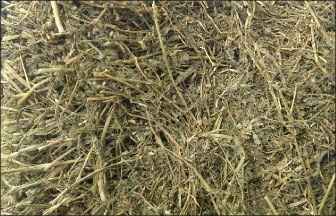
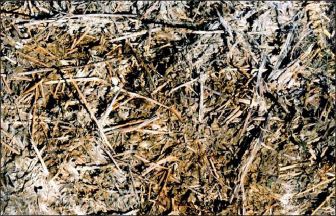
Grains and Grain Mixes
Grains, grain mixes and supplements are used when forage does not meet all of the nutrient needs of a horse. Grains such as oats, corn and barley are used to increase the calorie content of the diet. Most of the energy in grains comes from starch. Grains may be fed whole or processed. Cracking and rolling are common processing techniques that break the outer shell of the grain kernel and may improve the digestibility of the grains. Fine grinding of grain is not usually recommended for horses as it creates a dusty feed that may be less palatable to the horse. However, grains can be ground and pelleted, and this process can improve some of the nutrient characteristics.
Although grains are high in calories, they contain only a moderate amount of protein. Oats, corn and barley are also deficient in calcium, which is necessary for normal bone development, milk production and maintenance. Most grains are also low in some important trace minerals and certain vitamins. A diet of good quality hay or pasture, oats (or corn or barley), salt and water may meet minimum requirements of mature horses in light work, nonpregnant broodmares and breeding stallions. However, this type of diet is rarely optimal for pregnant or lactating broodmares, horses in moderate to intense work or growing horses.
Many feed companies manufacture grain mixes specifically for horses. Commonly referred to as concentrate feeds, these grain mixes are intended for use with pasture or hay and not as the only feed. Because plain cereal grains are low in many essential nutrients, commercially manufactured concentrate mixes are usually fortified with added protein, vitamins and minerals. Commercially manufactured mixes are formulated to meet the needs of a certain type of horse. For example, a feed company might manufacture one feed for broodmares and another feed for performance horses.
Table 2 shows the differences in the nutrient composition of typical manufactured concentrate feeds that are formulated for different types of horses. In general, feeds manufactured for horses with higher nutrient requirements have higher concentrations of nutrients. For example, in Table 2, the feed designed for weanlings has more protein, calcium and phosphorus than the feed designed for recreational riding horses. The best results are obtained when commercially manufactured feeds are used for their intended use. Poor results are often observed when a feed formulated for one type of horse is used for another type of horse. The amount of each feed that should be fed to a particular horse will vary with the size of the horse and the type and quality of hay or pasture available.
| Type of horse | % Crude protein | % Ca | % P | Cu (ppm) |
| Recreational riding | 10-12 | .5 | .35 | 20-30 |
| Performance | 12-14 | .8 | .6 | 35-40 |
| Pregnant mares | 14 | .8 | .6 | 35-50 |
| Weanlings | 16 | .9 | .7 | 35-50 |
| Note: Ranges for typical grain mixes available from commercial manufacturers. These values are not the same as requirements; requirements take into account all feeds consumed by horses, including forage component. |
Commercially manufactured concentrate mixes are usually available in one of two forms—sweet feed or pellets. Sweet feeds (also called "open feeds" or "textured feeds") are popular with horses and horse people. A sweet feed contains whole or slightly processed grains, a supplement pellet (which contains protein, vitamins and minerals) and molasses. Pelleted feeds can have the same nutrient composition as sweet feed, but the ingredients are ground and pressed into a pellet. With pellets, horses cannot sort the ingredients, and usually less is wasted, particularly when horses are fed outdoors. There are different sizes of pellets. Large pellets are easier for horses to pick up if they are dropped on the ground or stall floor.
Should you mix different feeds together?
It is a common practice to purchase a fortified grain mix and then feed it in combination with oats or corn. This practice is not recommended as it can result in an unbalanced calcium:phosphorus ratio, and it dilutes some of the other nutrients in the feed. Oats contain less than 0.1% Ca and about .35% P. If oats were mixed 50:50 with the feed designed for pregnant mares in Table 2, the resulting combination would contain slightly more phosphorus than calcium, which is undesirable. In addition, the concentration of protein would be diluted, so instead of feeding a grain with 14% crude protein, the combination would have about 12.5% protein.
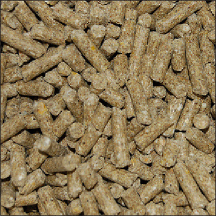

What "brand" of horse feed should you buy?
Depending on where you live, you may have many choices in horse feed brands. Excellent horse feeds are manufactured by national feed companies, regional feed companies and local feed mills. Two important questions to ask your feed supplier are (1) How do you control quality? and (2) Do you use fixed formulations or least cost formulations?
Mills that practice good quality control will assess the ingredient composition frequently and will periodically compare the actual composition of their manufactured feeds to the intended composition. Most feed tags or feed bags will contain information about the concentration of various nutrients in the feeds. Consumers should realize that these values guarantee a minimum or a maximum value, not the exact content. Sometimes mills over-formulate, so that they end up with a feed that is slightly higher in the concentration of important nutrients than stated by the guarantee on the bag. For example, if a feed tag indicates that the minimum amount of crude protein in the feed is 14%, the actual concentration of crude protein in the feed may be between 14.5 and 15%. Most questions about quality control arise when actual nutrient compositions are lower than the guarantee or are much higher than the guarantee.
One way feed mills assure feed quality is by purchasing their feed ingredients from consistent and reliable sources on a quality basis. For example, grain quality is judged by the condition of the individual kernels and the absence of any foreign materials. Good quality grains have few broken or damaged kernels, have minimal contamination from dirt or weeds and have normal color. Good quality oats should be off-white or light tan in color, whereas oat kernels that are rain damaged may appear gray in color. Bushel weight is another characteristic of grain quality. For grains such as oats and barley a lower weight per bushel indicates that there is more hull and thus more fiber, which is the least digestible portion of the grain.
Good milling practices are especially important when mills make feeds for many different types of animals. Some mills designate one set of equipment for medicated feeds for livestock and another set of equipment for non-medicated feeds to minimize potential for accidental contamination of non-medicated feeds. Another characteristic of good milling practices is a uniformly mixed feed, where the contents of every bag of feed in the same batch looks and feels the same.
A fixed formulation is one in which the amounts of the ingredients used from batch to batch are fixed within a very narrow range. Consequently, when you purchase a particular feed this month, the percentage of oats or corn or another ingredient is very similar to the percentage in the feed last month. Fixed formulations are usually more expensive than least cost formulations but offer ingredient consistency from one time to the next. Least cost formulations offer the same nutrient composition from time to time but may use different ingredients, based on cost. For example, when the price of oats goes up, a least cost formulation might substitute barley, if it can be included for a lower price. Least cost feeds offer economy but may cause feed refusals in some horses if there are major changes in ingredients. Other considerations in selecting a horse feed relate to the needs of individual operations. For example, someone who shows or races horses in different states might prefer a regional or national brand that can be obtained wherever they compete. Someone else might prefer the personal attention or service that a local mill can provide.
Should you get a custom mixed feed?
Some feed mills will mix feeds using customer specifications. These feeds are commonly referred to as a "custom mix." A custom mix might be used if an operation has a special ingredient it would like included in their feed or if they have special needs horses (aged or sick) that require a more highly fortified feed than is typically available. In most cases, the disadvantages to obtaining a custom mix outweigh the advantages. One disadvantage is the amount of feed that will have to be purchased at one time. Many feed mills have a minimum amount of feed that they will mix in a batch—usually one or two tons. Therefore if you are having a custom mix prepared, you will have to purchase and store the entire batch once it is prepared. Unless you have enough horses to use the entire batch in a reasonable period of time (usually 3 to 4 weeks, depending on storage conditions), some of the feed may spoil. Many feed mills will add an extra charge for custom mixing, so the price of your custom mix may be higher than the cost of standard feeds offered at the mill. Finally, unless the mill is involved in developing the formula for a custom mix feed (that is, deciding how much of which ingredients should be used) they may not stand behind the quality of the feed that is produced.
Supplements
There are hundreds of feed supplements marketed for horses. Some contain known nutrients with known nutrient functions such as vitamin E, selenium or methionine. Others contain ingredients that are supposed to enhance performance or have beneficial health effects. Horse owners and trainers should be extremely cautious in the use of these products. When choosing a feed supplement, ask yourself (1) Is it effective? and (2) Is it safe? The best evidence that a specific supplement is effective is a controlled research trial comparing treated horses and untreated controls. Very few equine supplements are actually tested for efficacy in this manner, thus it may be necessary to rely on information from use in other animals. Unfortunately, not all species metabolize all supplements in the same way, so something that is effective in one animal may not have the same effect in a horse.
Safety is always a concern when any feed supplement is used. Some supplements may be safe when used in small amounts but toxic in larger amounts. For example, selenium is a trace mineral that is necessary for normal tissue maintenance, and it is deficient in many feeds so supplementation is required for many animals. However, selenium can also be toxic. Excessive selenium intake can result in hoof and hair damage, among other things. Excessive intake can occur if a horse receives a feed supplement with a high level of selenium in addition to a fortified grain mix. A similar situation can arise with other nutrients and can be avoided if horse owners and managers take the time to understand the nutrient content of all feeds in use.
Nutritional Feed Supplements
A nutritional supplement may be necessary when other feeds do not meet the nutrient requirements of a specific horse. For example, it is always a good idea to provide a salt lick of some type. Commercially manufactured feeds contain added salt but may not provide enough salt for all situations. Occasionally a horse will develop a deranged appetite for salt and consume large amounts in short periods of time. For horses that exhibit this behavior, access to a salt lick should be controlled.
Beyond providing a salt lick, nutritional supplements are rarely necessary when a manufactured grain mix is used according to the manufacturer's directions. The addition of supplements to a manufactured feed may actually create an unbalanced diet by providing too much of a specific nutrient.
One type of nutritional supplement that can be useful in some feeding programs is a "balancer pellet." A balancer pellet is a concentrated source of minerals and vitamins. Often this is the same pellet that feed companies include in their sweet feed to add additional protein, vitamins and minerals to their manufactured feeds. A small amount (1-2 lb) is fed each day when the diet provides adequate calories but not trace nutrients. These pellets can be used when horses are receiving a diet of hay and plain cereal grains. They can also be used when horses are getting enough calories from pasture or hay and thus do not require any grain to meet their calorie needs. Balancer pellets are not needed in rations containing a commercially manufactured fortified grain mix that is fed according to the manufacturer directions.
Equine athletes competing or training in hot environments may benefit from electrolyte supplementation. Sodium, potassium and chloride are the electrolytes lost in the greatest quantities in sweat, and use of a supplement containing these minerals may help horses recover from strenuous exercise in the heat. When evaluating an electrolyte product, look for the amount of sodium, chloride and potassium in each dose. These electrolytes will usually be mixed in some type of carrier, but the chloride, sodium and potassium should be the primary ingredients.
Non-Nutritional Feed Supplements
Many of the non-nutritional feed supplements on the market are referred to as "nutraceuticals." Some of the most common nutraceutical supplements are those that contain chondroitin sulfate and/or glucosamine. These supplements are intended to improve joint function. Similar supplements are marketed for humans and dogs. There are limited studies on effectiveness in horses, but some studies have shown benefits in other species.
Herbal feed supplements are currently very popular in the horse industry. Common herbs used in equine products include echinacea, garlic, rosemary, chamomile and ginseng. There are few, if any, scientific studies documenting the benefits of these herbs in horses. In addition there are few safety studies with horses. It is wrong to assume that all herbs are safe because they are "natural." Some herbs contain chemicals that have pharmacological effects. These pharmacological effects may be beneficial to the horse, but there is also the potential of negative effects. For example, one herb that is supposed to enhance appetite is also contraindicated in individuals with gastric ulcers. Some herbs contain substances that are banned by organizations that govern equine competitions.
The manufacturer of equine supplements is subject to variable levels of regulation and inspection. Consequently, the amount of active ingredients in these products can vary greatly among brands. Consumers should read supplement labels carefully before purchasing a supplement for their horse.
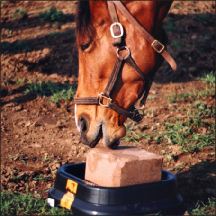
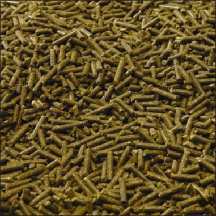
Additional Information
More information about feeding horses can be found in the following publications available from the UK Cooperative Extension Services.
- ASC-143 Equine Feeding Management
- ASC-120 Forages for Horses
- ASC-115 Formulating Rations for Horses
- ASC-114 Basic Horse Nutrition
- ASC-185 Feeding the Broodmare: Four Easy Steps
- ASC-187 Help! My Horse is Too Fat!
- ASC-188 Help! My Horse is Too Thin!
- ID-144 Understanding Endophyte Infected Tall Fescue and Its Effect on Broodmares
- ID-145 Alfalfa Cubes for Horses
- ID-146 Choosing Hay for Horses
